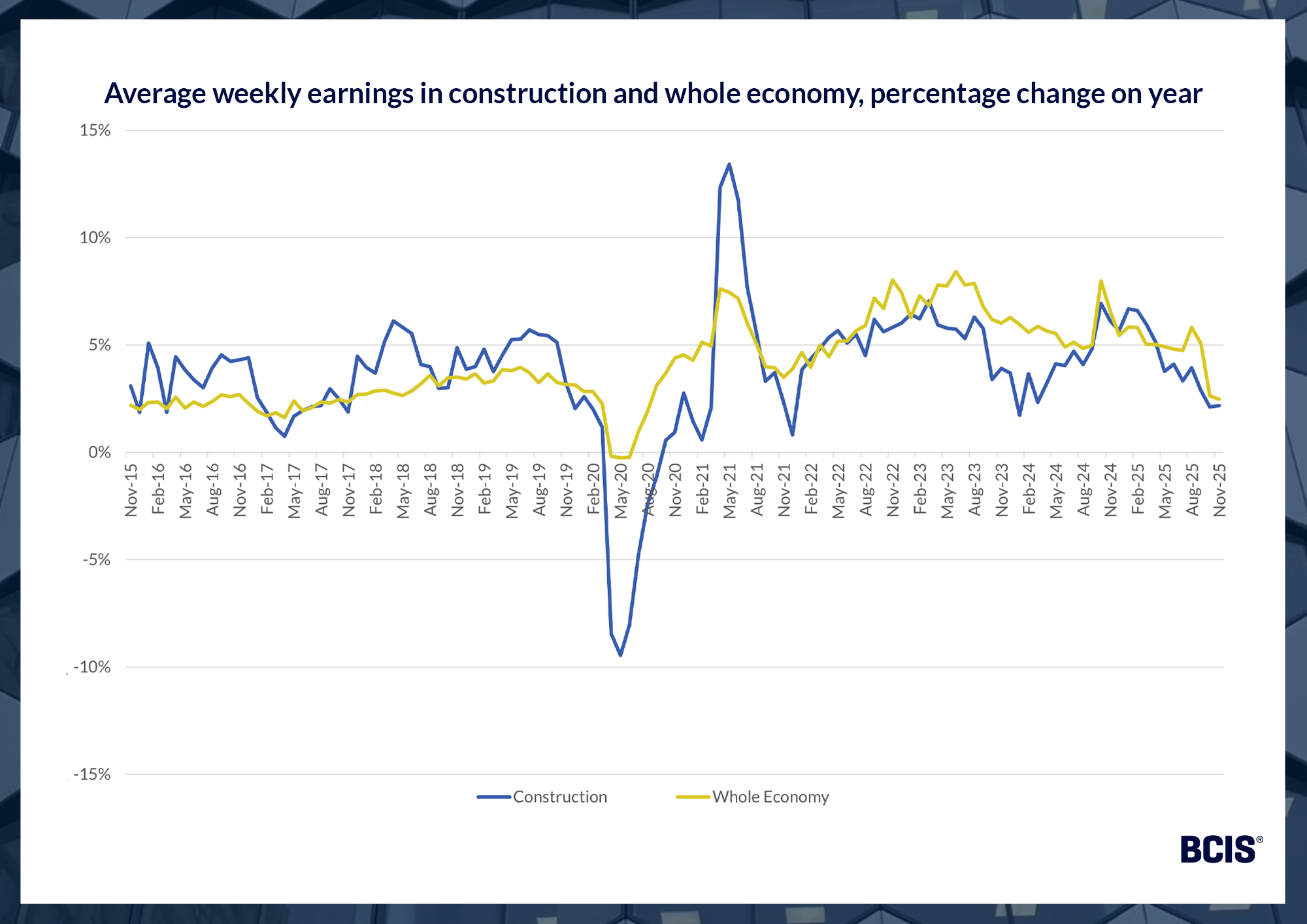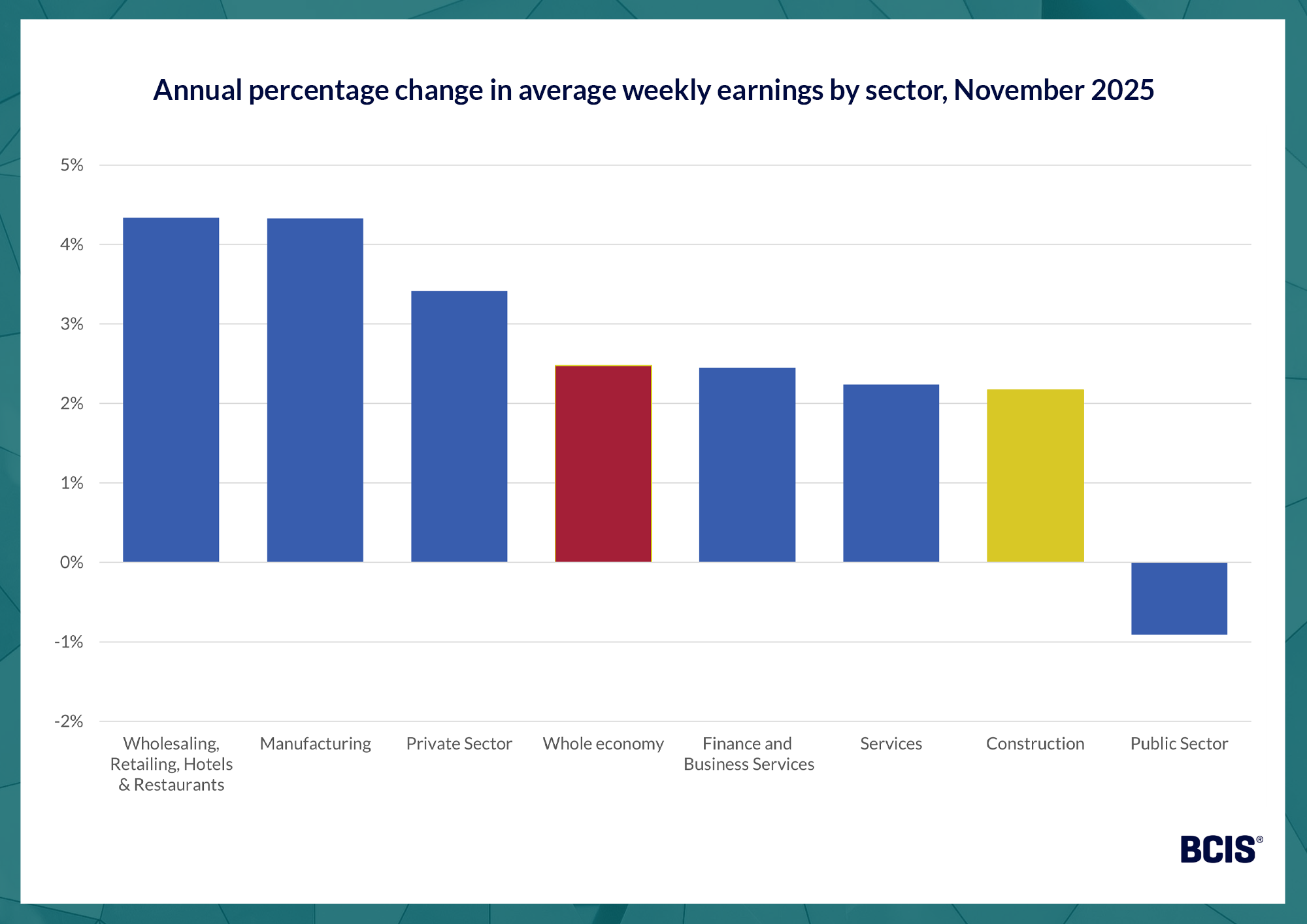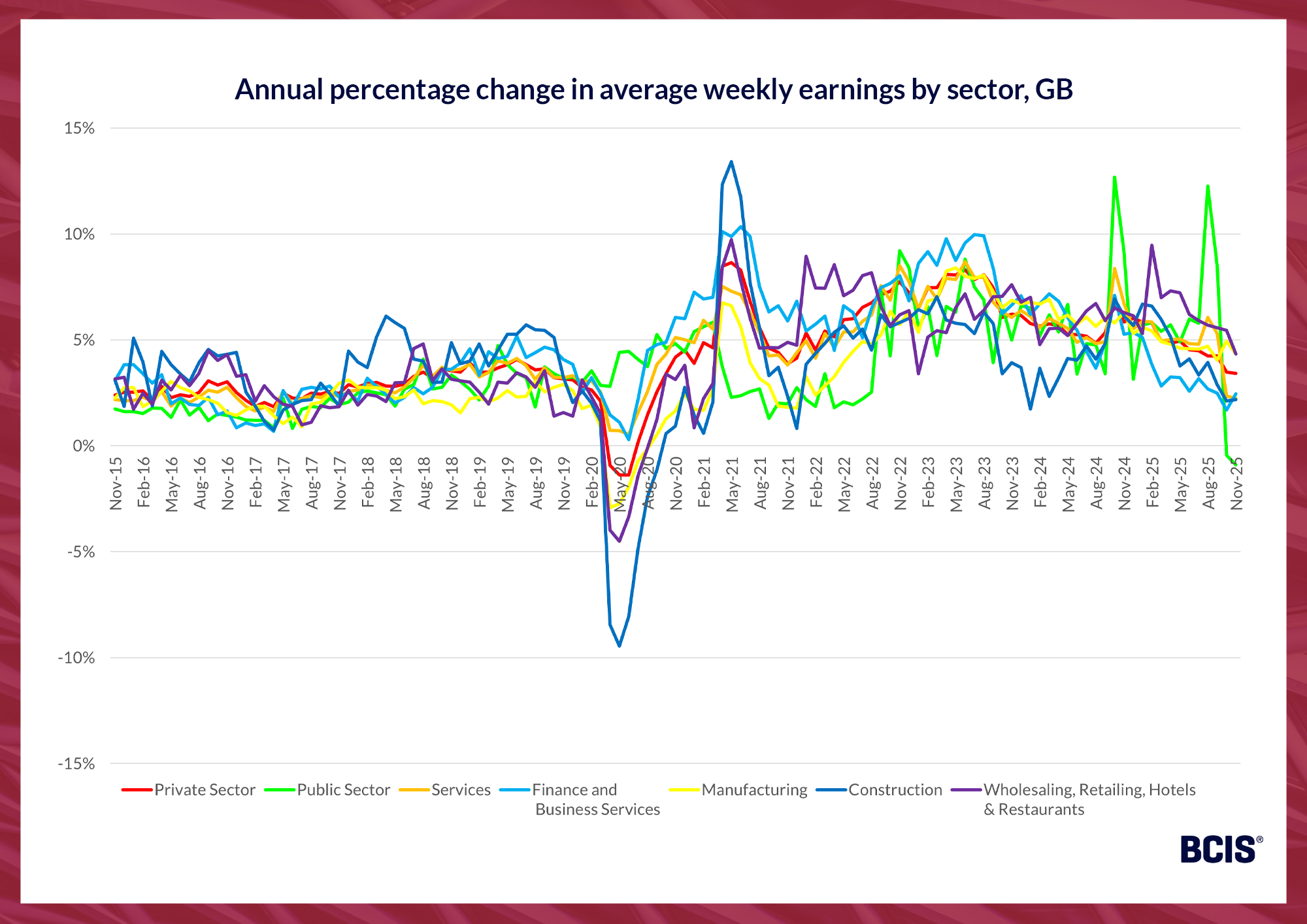The Building Cost Information Service (BCIS) is the leading provider of cost and carbon data to the UK built environment. Over 4,000 subscribing consultants, clients and contractors use BCIS products to control costs, manage budgets, mitigate risk and improve project performance.
Published: 20/01/2026
The Office for National Statistics (ONS) publishes monthly updates on average weekly earnings across the whole economy and by industry and sector in Great Britain. This commentary relates to ONS’s EARN02 and EARN03 datasets, which cover non-seasonally adjusted earnings, excluding bonuses and including arrears.
Construction wage growth up in November, still trailing whole economy average
Construction wages, as measured by index K5AH in the ONS’s Average Weekly Earnings dataset(1), increased by 2.2% in the year to November 2025. This was an increase on the 2.1% rise seen in the 12 months to October 2025. On the month, there was a 0.7% decrease in the construction industry’s average weekly earnings.
Across the whole economy, the average increase in earnings in the year to November 2025 was 2.5%, down from 2.6% in October, according to index KA5H(2).
Dr David Crosthwaite, chief economist at BCIS, said: ‘Annual wage growth in construction was subdued in November, although it was a slight increase on the movement seen in October. It likely reflects a cooling in market demand and aligns with the slowdown in new work seen at the tail end of last year – output data show monthly new work dropped by 1.9% in November.
‘Interestingly, construction job vacancies also remained low in November at around 29,000. Again, this is symptomatic of recruitment reluctance among businesses at a time of slow demand and high costs.’
Annual growth in earnings in construction was lower than the whole economy average for the seventh consecutive month in November 2025.
Source: ONS – Construction (K5AH) and Whole economy (KA5H), non-seasonally adjusted average weekly earnings, excluding bonuses, including arrears
Comparing pay at a sector level (with index K56S), construction workers saw the second lowest annual increase in average weekly earnings across all sectors.
The greatest annual wage growth was recorded in the wholesaling, retailing, hotels and restaurants sector with a 4.3% rise. Elsewhere, the public sector saw a 0.9% decline in annual wage growth – the second consecutive month a decrease has been recorded.
Source: ONS – EARN02: Non-seasonally adjusted Average Weekly Earnings, excluding bonuses, including arrears, at sector level
The ONS data show that the construction sector has experienced the most extreme fluctuations in earnings movement in recent years, from a 9.5% annual decrease in May 2020 to a 13.4% increase year-on-year in May 2021.
Source: ONS – EARN02: Non-seasonally adjusted Average Weekly Earnings, excluding bonuses, including arrears, at sector level
BCIS produces five-year forecasts of the Average Weekly Earnings construction (K5AH) and whole economy (KA5H) time series for subscribers of BCIS OpX.
To keep up to date with the latest industry news and insights from BCIS, register for our newsletter here.



